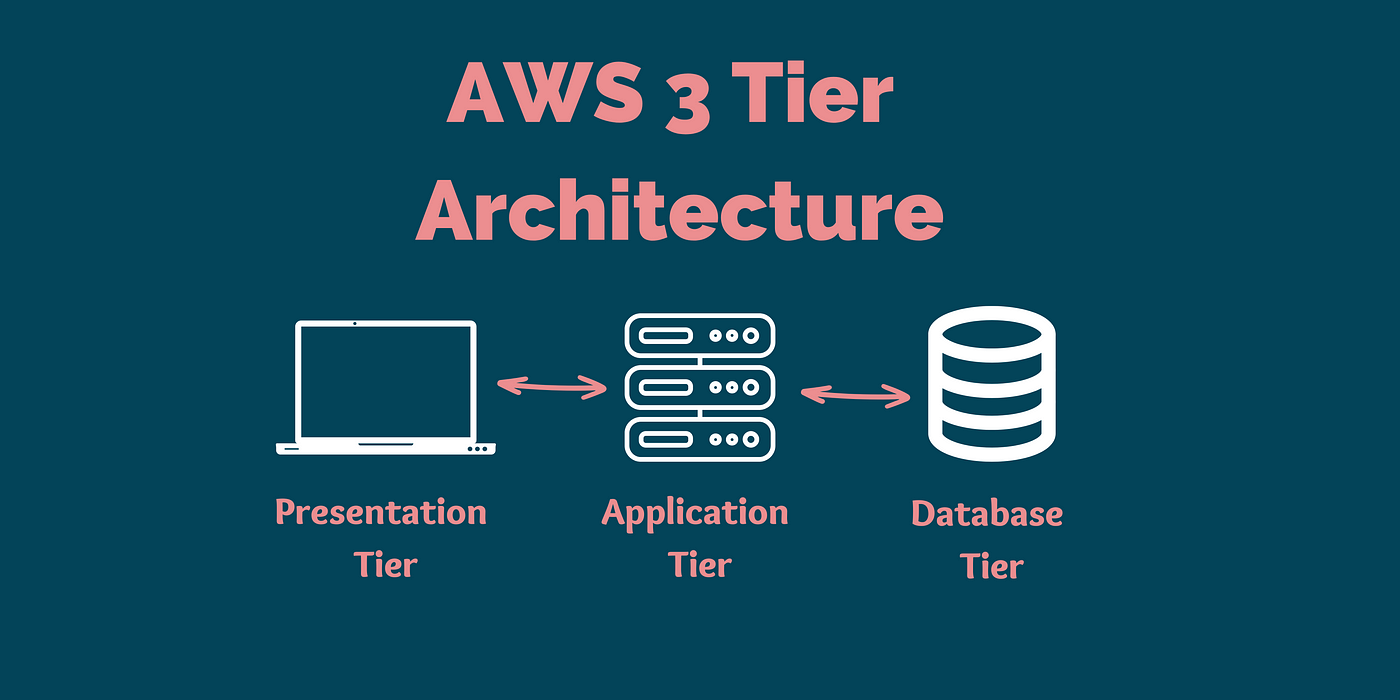Deploying a Scalable Three-Tier Architecture on AWS
Table of contents
Cloud computing has transformed modern application deployment, and the Three-Tier Architecture is a trusted model for achieving scalability, security, and high availability. In this blog, we’ll walk through deploying a Three-Tier Architecture on AWS, leveraging key AWS services to optimize performance.
Understanding the Three-Tier Architecture
A Three-Tier Architecture divides an application into three independent layers:
Presentation Layer (Frontend): Delivers static web content to users.
Application Layer (Backend): Handles business logic and processes user requests.
Database Layer: Manages structured data storage and retrieval.
AWS Services Used
✅ Amazon S3 & CloudFront → Host and distribute static frontend files efficiently.
✅ Amazon EC2 & Load Balancer → Run backend services with high availability.
✅ Amazon RDS → Provide a managed, scalable relational database.

Step 1: Deploy the Frontend Using AWS S3 and CloudFront
1.1 Configure Amazon S3 for Static Website Hosting
1️⃣ Open AWS S3 Console → Click Create Bucket.
2️⃣ Provide a unique bucket name (e.g., my-web-app).
3️⃣ Under Properties, enable Static Website Hosting.
4️⃣ Upload frontend files (index.html, style.css, etc.).
1.2 Use CloudFront for Performance and Security
1️⃣ Open AWS CloudFront Console → Click Create Distribution.
2️⃣ Set the S3 bucket as the origin.
3️⃣ Enable HTTPS & caching for performance enhancement.
✅ Your frontend is now globally available with security and low latency!

Step 2: Deploy the Backend on Amazon EC2 with a Load Balancer
2.1 Launch an EC2 Instance
⦿ Open the AWS EC2 Console → Click Launch Instance.
⦿ Choose Amazon Linux 2 or Ubuntu.
⦿ Configure Security Group Rules:
Allow HTTP (Port 80) for public access.
Restrict SSH (Port 22) to specific IPs for security.
2.2 Deploy Backend Code
SSH into the EC2 instance.
Install dependencies and run the backend application.
2.3 Set Up a Load Balancer for High Availability
⦿ Open AWS EC2 Console → Click Load Balancer.
⦿ Choose Application Load Balancer (ALB) and attach EC2 instances.
⦿ Configure Auto Scaling to handle traffic spikes automatically.
✅ Your backend is now live and scalable!

Step 3:Deploy the Database on AWS RDS
3.1 Create an RDS Instance
🔹 Open AWS RDS Console → Click Create Database.
🔹 Choose MySQL or PostgreSQL.
🔹 Configure security group rules to allow connections only from EC2 instances.
3.2 Connect Backend to RDS
🔸 Retrieve the RDS Endpoint from the AWS Console.
🔸 Update your backend’s environment variables for database connection.
🔸 Restart the backend service to apply changes.
✅ Your database is now operational with automated backups and scaling!

Step 4: Automate Deployment with CI/CD
For smooth updates and continuous deployment, use AWS CodeDeploy or GitHub Actions.
Example: Deploy Backend Using AWS CodeDeploy
✅ Now, every update gets automatically deployed!

Step 5: Secure & Monitor Your AWS Infrastructure
✅ Security Best Practices
🔹 Implement IAM Roles to manage access.
🔹 Enable AWS WAF & AWS Shield to mitigate DDoS attacks.
✅ Performance & Security Monitoring
🔹 Use AWS CloudWatch to analyze logs and system metrics.
🔹 Enable AWS GuardDuty for security threat detection.
✅ Your cloud application is now protected and efficiently monitored!

Conclusion
Deploying a Three-Tier Architecture on AWS ensures high availability, scalability, and security for cloud applications. By leveraging services like S3, CloudFront, EC2, Load Balancer, and RDS, each layer—frontend, backend, and database—operates independently, ensuring modularity and fault tolerance.
Key Takeaways:
✅ Scalability: Load Balancers & Auto Scaling handle traffic fluctuations.
✅ Security First: IAM roles, WAF, and GuardDuty protect cloud assets.
✅ Optimized Performance: CloudFront caching and CloudWatch monitoring improve efficiency.
✅ Automation: CI/CD pipelines streamline deployment for faster releases.